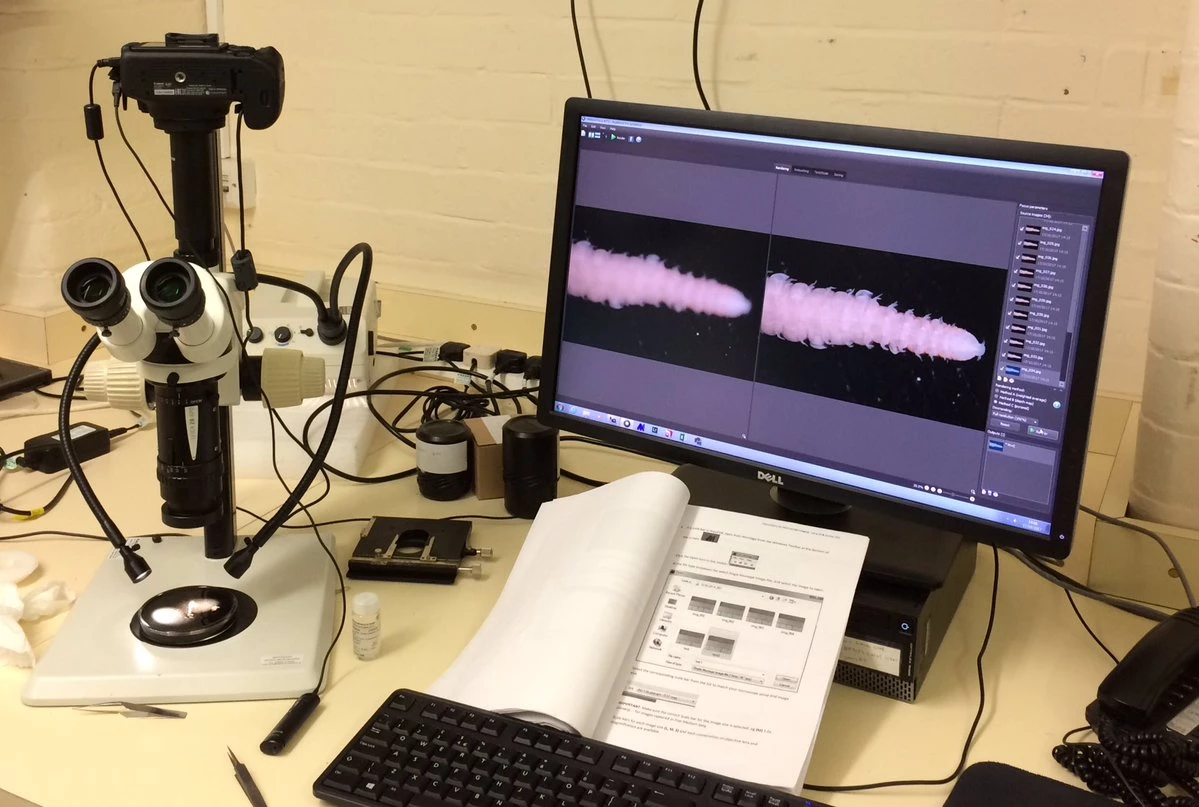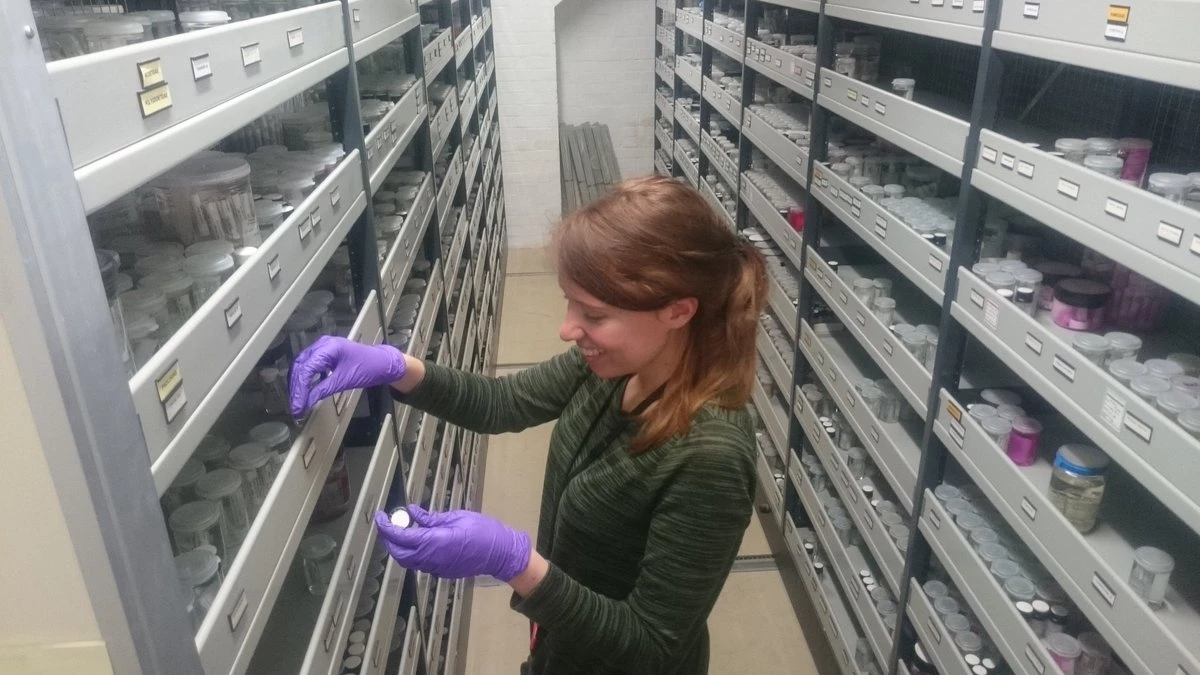A ‘tail’ of a PTY student
, 15 November 2017
Nearing the four-month mark since I stepped into National Museum Wales for the first day of my Professional Training Year (PTY) placement from Cardiff University, my goal of achieving new experiences in the world of marine invertebrate research is definitely underway. This is now taking form in the way of the Magelonidae, the shovelhead worms, a family of polychaetes with many unanswered questions hovering around them in regards to their ecology, taxonomy and behaviour.
Through starting with live observations in the museum lab in July of Magelona alleni, a rather chunky species of magelonid, my project has developed into some exciting discoveries regarding not only the feeding of these amazing worms, but also how they poo, hence the title of the blog post! As boring as worm defecation sounds, this is not the case when you watch how these amazing animals decide to actually get rid of their dinner (there will be more about the details of this in my next blog post when we have finished working on this interesting behaviour).
These findings have led me down a road of using many new techniques to be able to present my work in a professional and scientific manner. This includes scientific drawing using a camera lucida attachment on a microscope, photography in the way of time-lapse captures, film and image stacking, image editing, reviewing relevant literature, statistical analysis, dissection and SEM (scanning electron microscopy) to name but a few.
In addition to these skills I have learnt much about day to day tasks the museum carries out, including learning methods of curation for an impressive collection of marine invertebrates, holding over 750,000 specimens and having the opportunity to partake in sampling trips to collect more animals for the further development of my project and other projects around the museum. I have also settled into the role of tank maintenance for not only the shovelhead worms, but also some of our resident anemones, hermit crabs, starfish, sea potatoes and prawns. I have even tried my hand at outreach on one of the museum’s stands during the evening event ‘After Dark at the Museum’ with Cardiff University, which saw nearly 2000 people (mainly families) enjoy a hands on experience.
One crucial advantage that I feel I have obtained over these last few months is that I am starting to enjoy a great appreciation for the diversity of life in our seas, from the very tiny, such as organisms like diatoms and foraminiferans to the impressively large, like the young humpback whale skeleton on display in the museum, which I get the pleasure of walking past most days. All in all, my experiences so far have been beyond valuable and who knows what the next few months of research here will bring.
Find out more about how I got on when I first started at the museum



